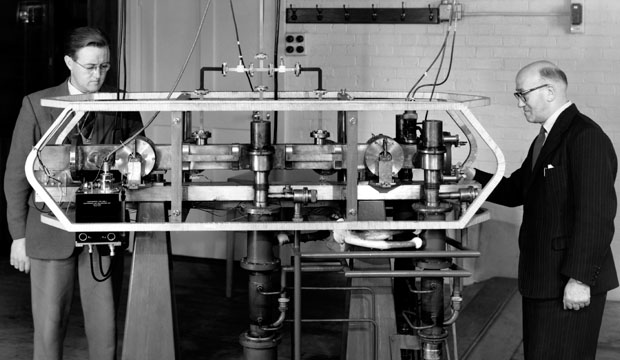Do you know, to determine a spacecraft’s distance from Earth, navigators use a clock? Yes!! Timing is the most important factor when it comes to GPS satellites and other space applications. The time required for sending a signal to the spacecraft, which then returns it to Earth can be used to calculate the spacecraft’s distance from Earth; since the signal travels at a known speed (the speed of light). By sending multiple signals like this and taking many measurements over time, they can calculate a spacecraft’s trajectory.
In this case, the frequency produced by a quartz crystal or crystal oscillator isn’t typically precise enough when it comes to the standards. Because it slowly loses track of time over time. An upgraded technology was needed to overcome this problem and the super-accurate atomic clocks are used today.
What is an Atomic Clock?

The big difference between a standard clock and an atomic clock is that the oscillation in an atomic clock is between the nucleus of an atom and the surrounding electrons. The atomic clock is an extremely accurate clock that is regulated by the vibrations of an atom or molecule. It uses the resonance frequency of atoms as its resonator. When exposed to certain frequencies of radiation, the electrons around the nucleus will “jump” back and forth between energy states. The resonator is regulated using this technique to provide an extremely precise way to count second.
Atomic clocks are of different types:
- Caesium atomic clocks: It is the most accurate type of atomic clock using Cs-133 atom. 1 second= 9,192,631,770 cycles
- Hydrogen atomic clocks: It is an atomic clock that uses the ultra-stable 1.4 GHz transition in an H atom. It can measure time within 0.45 nanoseconds over 12 hours.
- Rubidium atomic clocks: The simplest and most compact among other atomic clocks. It uses the Rb-87 isotope by which a frequency of ~6.84GHz induces the transition between energy levels.
Why are Atomic Clocks used?

Credits: NASA
For space exploration applications, clocks must be extremely precise and stable. Stability means its measurement of the length of a second, which needs to be the same over days and weeks. An error of even one microsecond can lead to the missing of 300 meters in the ground. Also, precision timekeeping could enable small satellites to communicate with each other more effectively and help spacecraft navigate in deep space.
Atomic clocks are used for applications such as high-speed electronic communications, the Global Positioning System (GPS), navigation in outer space, etc. NASA’s Deep Space Atomic Clock, a miniaturized, ultra-precise mercury-ion atomic clock, launched in June 2019 is intended to be the most stable atomic clock ever flown to space. It will enable a more efficient, flexible, and scalable clock architecture that will benefit future navigation and radio science.
Also, the presence of gravity affects the rate of time passing. That is clocks closer to sea level tick slower than one on the mountain, which means that physicists can use these clocks to monitor the shape of our planet. Therefore, the future of the world’s satellite infrastructure, telecommunication, etc. depends on a clock.
Courtesy: NASA








